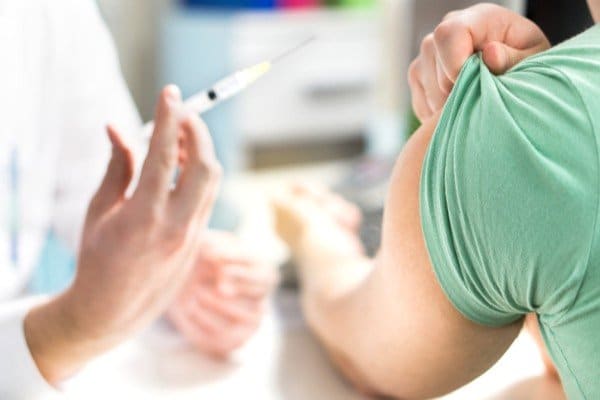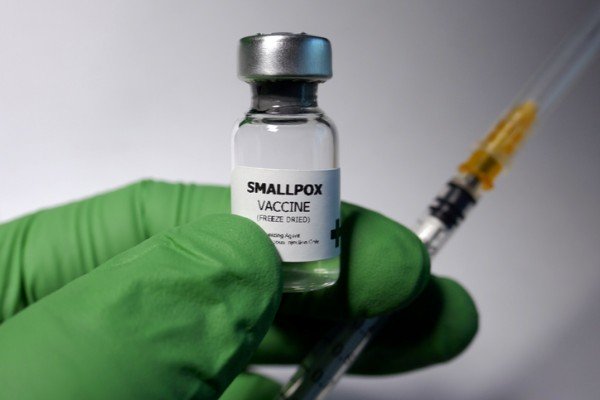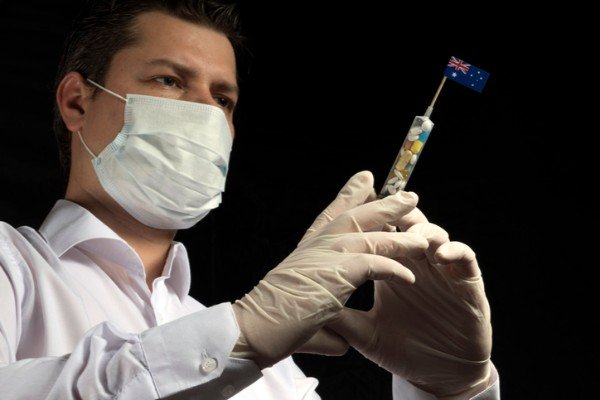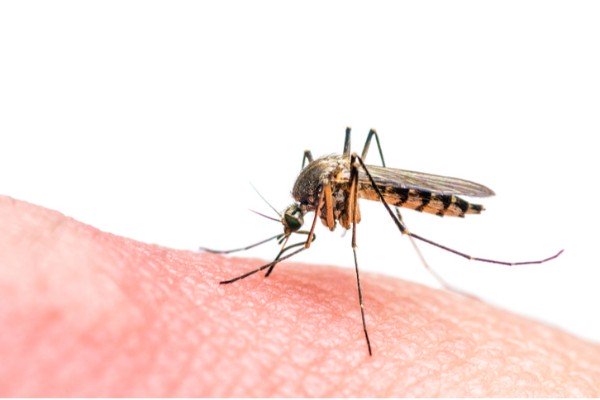Vaccination in Australia is a very hot topic and one which is in the news a great deal. During World Immunisation Week, take a look at the answer to the common question, ‘how do vaccines work?’, plus other information about this practice.
How do vaccines work?
According to the World Health Organisation, “a vaccine is a biological preparation that improves immunity to a particular disease”.
The WHO’s website shares that “a vaccine typically contains an agent that resembles a disease-causing microorganism, and is often made from weakened or killed forms of the microbe, its toxins or one of its surface proteins. The agent stimulates the body’s immune system to recognise the agent as foreign, destroy it, and “remember” it, so that the immune system can more easily recognise and destroy any of these microorganisms that it later encounters.”
Historically, the origin of vaccines is not completely certain. One source, ‘History of Vaccines’, claims that “evidence exists that the Chinese employed smallpox inoculation (or variolation, as such use of smallpox material was called) as early as 1000 CE. It was practiced in Africa and Turkey as well, before it spread to Europe and the Americas.”
The practice of what was then known as variolation is said to have been introduced to Britain by the wife of the British ambassador to Ottoman Constantinople. This lady visited the Ottoman Empire and, noticing the practice, had her children ‘treated’ against smallpox and shared what she had learned in around the year 1721.

The eradication of smallpox
How do vaccines work? It could be described as giving your body a ‘practice’ of sorts at eradicating a disease. It then knows what to do should the disease invade for real.
The point most widely recognised as the birth of vaccines as we know them was in the year 1796. This commonly shared story is an interesting one:
“In the late 1700s, a young apothecary (similar to a pharmacist) named Edward Jenner observed that people who caught cowpox while working with cattle were known not to catch smallpox. Several years later, when a smallpox epidemic occurred, he advised the local cattle workers to be inoculated, but they told him that their previous cowpox infection would prevent smallpox. This confirmed his childhood suspicion, and he studied cowpox further, presenting a paper on it to his local medical society.
In the years following 1770, at least six people in England and Germany tested successfully the possibility of using the cowpox vaccine as an immunisation for smallpox in humans. In 1796, Sarah Nelmes, a local milkmaid, contracted cowpox and went to Jenner for treatment. Jenner took the opportunity to test his theory. He inoculated James Phipps, the eight-year-old son of his gardener, with material taken from the cowpox lesions on Sarah’s hand. After a mild fever and the expected local lesion, James recovered after a few days. About two months later, Jenner inoculated James on both arms with material from a case of smallpox, with no effect; the boy was immune to smallpox.”
Prior to this discovery, smallpox claimed the lives of thousands, and often within a matter of days. Over the next decades, the vaccine was administered to protect people from the disease. By the 1960s, it had become very cheap and easy to give a smallpox vaccine. After two years of intensive searches, what proved to be the last endemic case anywhere in the world occurred in Somalia, in October 1977. Smallpox was officially declared to be eradicated worldwide in 1980.

The importance of vaccination in Australia
As well as explaining how vaccines work, the World Health Authority shares on its Immunisation Week website that vaccines have saved millions of lives around the world. They are, according to the WHO, “recognised as one of the world’s most successful and cost-effective health interventions.”
In 2017, the number of children immunised reached 116.2 million and was the highest ever reported. The WHO shares that since 2010, 113 countries have introduced new vaccines, and more than 20 million additional children have been vaccinated.
However, despite positive gains, all the targets for disease elimination—including measles, rubella, and maternal and neonatal tetanus—are behind schedule. The WHO shares that over the last two years the world has seen multiple outbreaks of measles, diphtheria and various other vaccine-preventable diseases. Reports state that most of the children missing out are those living in the poorest, marginalised and conflict-affected communities.
When promoting the importance of vaccination in Australia and other countries, the WHO says that “expanding access to immunisation is vital for achieving the Sustainable Development Goals, poverty reduction and universal health coverage. Routine immunisation provides a point of contact for health care at the beginning of life. It offers every child the chance at a healthy life from the earliest beginnings and into old age.
Immunisation is also a fundamental strategy in achieving other health priorities. This includes controlling viral hepatitis and curbing antimicrobial resistance. It also provides a platform for adolescent health and improving antenatal and newborn care.”
For vaccines to truly work, they have to be used by as many people as possible. This gives disease fewer hosts to find and therefore less opportunity to spread.

Why vaccinate?
The following are some of the reasons why vaccination is encouraged, as shared by organisations including Vaccineinformation.org, Vaccines.gov and the Australian Department of Health.
-
- Parents want to do everything possible to make sure their children are healthy and protected from preventable diseases. Vaccination is known scientifically as being the best way to do that.
- Vaccination protects children from serious illness and complications of vaccine-preventable diseases which can include amputation of an arm or leg, paralysis of limbs, hearing loss, convulsions, brain damage, and death.
- Vaccine-preventable diseases, such as measles, mumps, and whooping cough, are still a threat. They continue to infect children, resulting in hospitalisations and deaths every year.
- Several diseases are still prevalent in developing countries. If children are not vaccinated, they could easily get one of these diseases from a traveller or while travelling themselves.
- All vaccines undergo long and careful review by scientists, doctors and governments to make sure they are safe.
- Some babies are too young to be protected by vaccination and others may not be able to receive certain vaccinations due to severe allergies, weakened immune systems from conditions like leukaemia, or other reasons. To help keep them safe, it is important that you and your children who are able to get vaccinated are fully immunised.
- We are now able to prevent a larger number of serious and life threatening infections. Some vaccines that were previously given as separate injections are now combined, reducing the number of needles needed, while protecting against more diseases.

No Jab, No Pay: Regulation surrounding vaccination in Australia
In Australia, the Government wants as many people as possible to vaccinate themselves and their children.
The Health Department website shares the following:
“From 1 January 2016, Children of all ages up to, and including, 19 years of age must meet the immunisation requirements for Family Tax Benefit (FTB) Part A end of year supplement, Child Care Benefit (CCB), and Child Care Rebate (CCR) and Child Care Subsidy (CCS) were extended to include children of all ages up to, and including, 19 years of age.
To meet the immunisation requirements, children need to be up to date with their immunisations, on an approved catch-up schedule or have an approved exemption.
For the purposes of FTB Part A and CCS, a child is required to be vaccinated against the diseases as per the age appropriate early childhood vaccination schedule.
Conscientious objection is no longer an approved exemption category.
To help parents meet the immunisation requirements, all young people up to and including 19 years of age can access free catch-up vaccines. If your child has missed some vaccines, talk to your doctor or vaccination provider to arrange catch-up vaccinations.”
In addition, some states require a child to be fully immunised in order to enrol in early childhood services, including NSW and Victoria.
Diseases which are almost completely wiped out thanks to vaccines
Despite the remarkable science of vaccines and how they work, smallpox is the only disease to be completely eradicated by vaccines which impacts humans.
There is progress towards the complete eradication of the following:
- Polio
- Malaria
- Rubella
Australia was declared free of measles in 2014, however people travelling overseas means this highly contagious disease has been reintroduced. There were close to 100 confirmed cases in the early months of 2019. This has renewed the push for vaccination, as this disease has the potential to be deadly for small babies and those with weakened immune systems.

The rise of the anti-vax movement
The general consensus from the WHO, myriad health professionals and health departments around the world is that vaccines are safe. The practice is seen as being low risk and effective for preventing the spread of deadly disease.
Despite this, there are groups who do not support vaccination in Australia and elsewhere.
People who do not support the practice of vaccination tend to do so because of health and safety concerns. They believe information shared by sources outside of major health organisations. This alternative information claims vaccines are unsafe.
The so-called anti-vax movement has spread because of the way information is rapidly shared online. With so many opposing views, it can be difficult to establish the true facts.

Common myths believed by anti-vaxxers
The push against vaccinations has triggered the WHO to list ‘Vaccine Hesitancy’ as one of the top global health threats. Many organisations have been created to spread messages against what anti-vaxxers believe to be true.
Some of the myths about vaccines and how they work include the following:
- Vaccines cause autism. A 1997 study made this claim, however it has since been discredited and several major studies have been conducted which have found no such link.
- It is better to build a natural immunity against disease. Natural immunity means catching a disease and getting sick. Subsequent infections will have less impact. Website publichealth.org debates this, saying your odds of dying from measles are higher than having an allergic reaction to a measles vaccine. Also, if you are infected, you risk passing the disease on to someone who is more vulnerable than yourself.
- Vaccines contain mercury. The Queensland Government shares that vaccines given through Queensland’s childhood immunisation program have not contained thiomersal since 2000.Thiomersal is a compound containing mercury which was used as a preservative in some vaccines in very small amounts prior to 2000. While there is no scientific evidence that the small amounts of thiomersal used in vaccines caused any harmful effects in children or adults, the compound has been removed as a precaution.
- Vaccines weaken your immune system. The Queensland Government also shares that vaccines actually strengthen your baby’s immune system by stimulating defence mechanisms that provide protection against specific diseases. “Babies are vulnerable to contracting serious life-threatening diseases because their major organ systems are not fully mature. This is why the National Immunisation Program Schedule recommends your baby receive their primary course of vaccinations at 6 weeks, 4 months and 6 months of age.”
The medical reasons for not vaccinating
Due to the way vaccines work, some people are genuinely not able to vaccinate for the following reasons:
- They experienced anaphylaxis after a previous dose of a vaccine
- They experienced anaphylaxis after a dose of any component of a vaccine
- They have a significant immunocompromise – for live vaccines only
- They have natural immunity – for hepatitis B, measles, mumps, rubella and chickenpox only.
If a parent has experienced a negative reaction to a vaccine, they may be nervous about vaccinating their child. In this case, the best approach is to have a conversation with your medical GP. This expert will be able to advise on whether or not a vaccine is best avoided in these circumstances, or if they could potentially be delayed.
The people in Australia who can grant an exemption from vaccines are:
- General practitioners (GPs) that are vocationally registered, or a fellow of the Royal Australian College of General Practitioners (RACGP) or Australian College of Rural and Remote Medicine (ACRRM)
- General practice registrars on an approved 3GA training placement
- Paediatricians
- Public health physicians
- Infectious disease physicians, or
- Clinical immunologists.
What to do if you’re concerned about vaccinating your child
All parents want what is best for their children and hope they stay healthy and safe.
With so much conflicting information about vaccines, it can be difficult to feel clear about where the risk genuinely lies. People may find they have pressure from family or friends not to vaccinate. They may also be fearful of negative outcomes of vaccines.
The best person to speak to is your family doctor. They will be able to share the latest information which is promoted by major scientific studies and health organisations. They can discuss concerns and point out which of them are valid and which have been discredited by scientific research.

Where to go for information about vaccines
There are many websites sharing information about vaccination in Australia and around the world. Take a look at some of the following:

